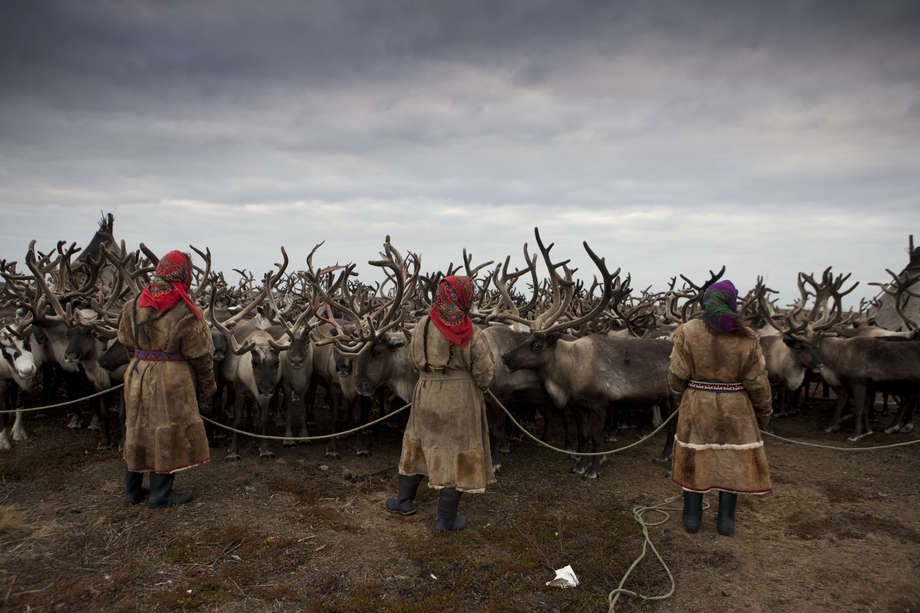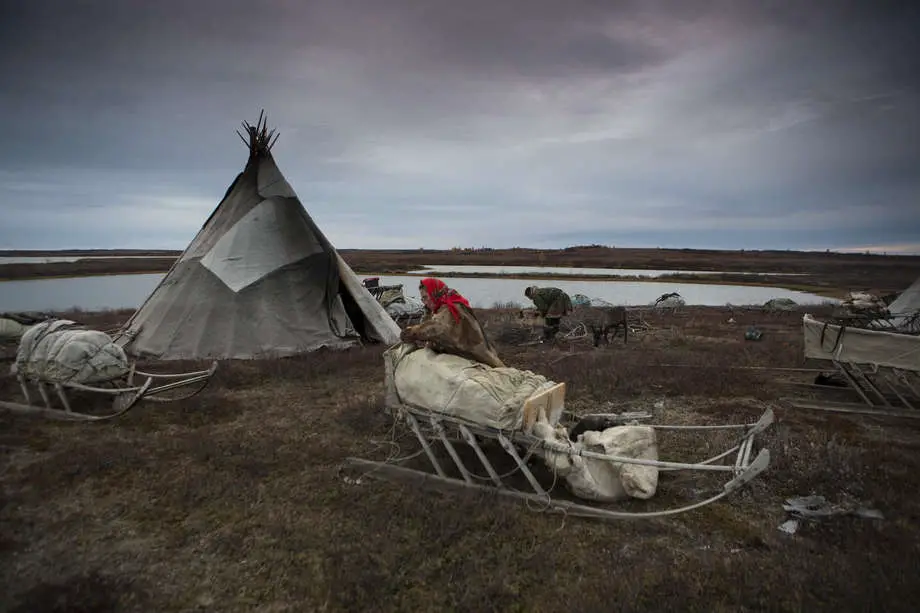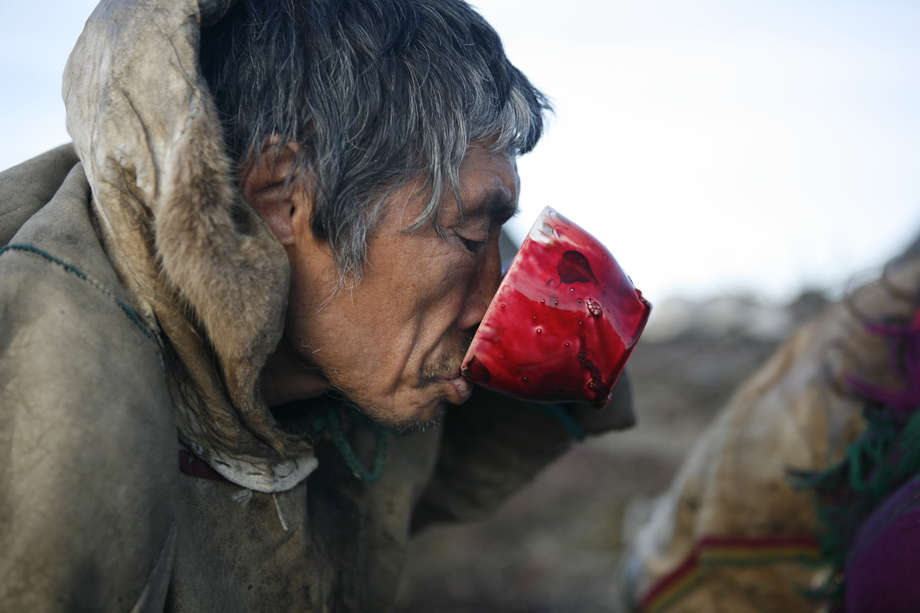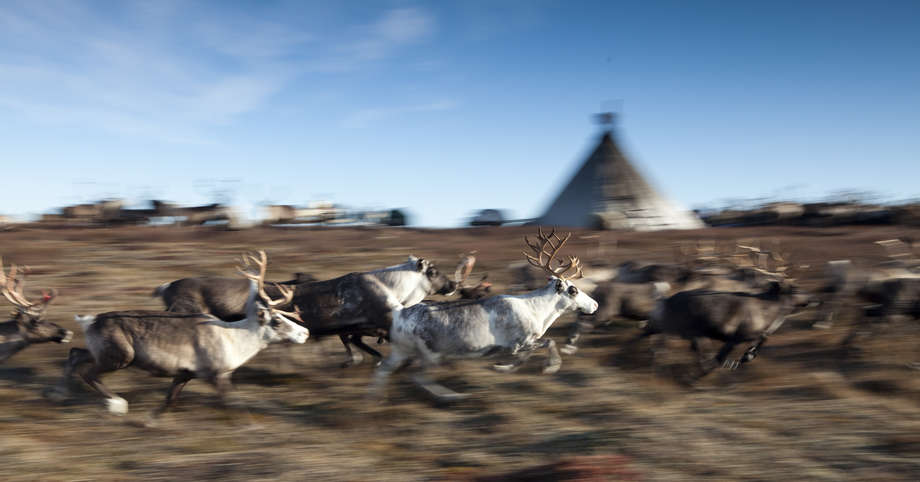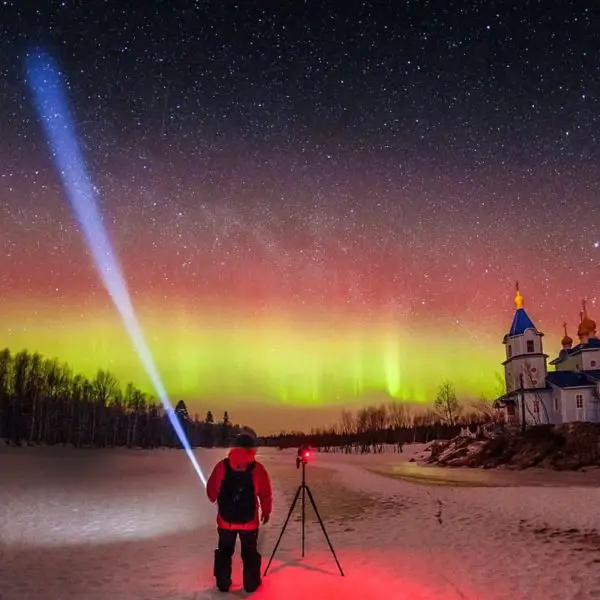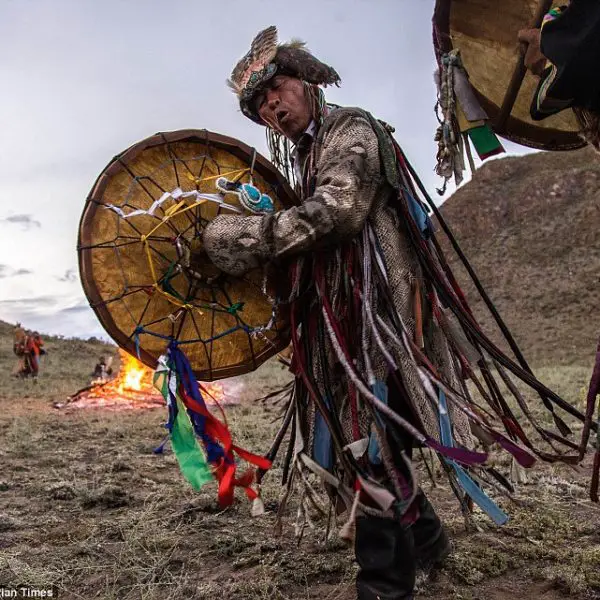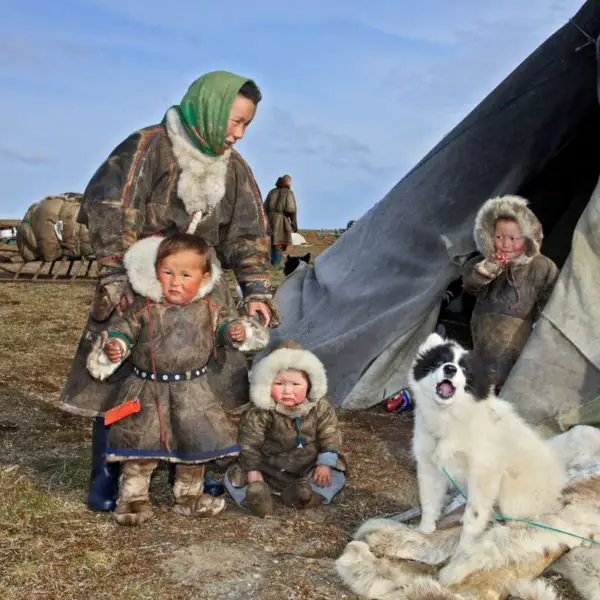Nenets Reindeer Migration - Life of Nomadic Siberians in Yamal
The annual reindeer migration sees thousands of reindeer and the Nenet people who herd them travelling up to 1000 kilometres along the Yamal Peninsula to the Kara Sea in Siberia.
Table of Contents
Nenet culture and traditions
The Nenets’ livelihood is tied to the reindeer. During the winter, when temperatures can plummet to -50C, most Nenets graze their reindeer on moss and lichen pastures in the southern forests or taigá. Every spring, the Nenets move these enormous herds from winter pastures on the Russian mainland, north to summer pastures in the Arctic Circle.
This massive journey usually starts in mid-March, when temperatures are still freezing, because part of the journey involves crossing a wide expanse of the Ob River.
Modern challenges faced by the Nenets
Although the Nenets survived early Russian colonisation of Siberia, they are threatened now by climate change and by the development of oil and gas fields in the far north. Climate changing the Arctic, as temperatures rise and the tundra’s permafrost thaws and releases greenhouse gases into the atmosphere the ice is melting earlier in spring and not freezing until much later in autumn.
Herders are being forced to change centuries-old migration patterns, as the reindeer find it difficult to walk over a snowless tundra. The rising temperatures also affect the tundra’s vegetation, the only source of food for the reindeer. The Nenets, indigenous people struggling to survive due to climate change and industrialisation of their land.
For centuries Nenets have survived the harsh conditions of the Yamal Peninsula. They have adapted to be able to live and travel in the freezing temperatures.
The Nenets have two types of sledges for travel and for carrying their belongings. Larger ones are driven by the women, and smaller, faster sledges by men. Men are responsible for regrouping reindeer around the camp each morning and keeping the herd moving in one direction throughout the day.
Strong connection to animals
The Nenet diet is based on reindeer meat and fish. Every three or four days, they kill a reindeer. Every part of the reindeer is used. Lassos are crafted from reindeer tendons; tools and sledge parts from bones. The covers of the tents (teepees) called “choom” or “mya“, are made from reindeer hide and mounted on heavy wooden poles. The meat, easily preserved in the cold, is left on a sledge, along with fish caught in ice holes, to be consumed when necessary.
Adapting to survive
The reindeer and sled dogs must withstand an environment where fierce winds are constantly blowing. European explorers used dogs bred by Nenet people for polar expeditions because they have adapted so well to the Arctic conditions.
Fascinating nomadic journeys
As nomadic people, the Nenets do not remain in one place for long. Depending on the weather, the Nenets may spend several days in one place, repairing sledges and chum coverings to keep busy before moving on.
During the reindeer migration camps of portable shelters called are erected. During the day, chooms are not heated, but at nightfall, Nenets use a wood-fired stove to cook their only hot meal of the day and to warm the air inside. Wood needed for warmth is often carried for most of the journey because forests become scarce along the way.
Joining a reindeer migration is not many people’s idea of a holiday but you can experience the nomadic life of Siberian people. We can offer you the unique opportunity to visit remote settlements and participate in the daily activities of local families. Meet nomads and their horses in an isolated camp on the great Siberian plains, or experience a warm traditional welcome and rustic food in an authentic rural Russian homestay.
Life as a nenet in a few minutes – Video clip
For enquiries about tours to Yamal and homestay experience with Nenets people, please contact us via [email protected] or +61 2 9388 9816.
Or check out the tours we offer during the reindeer migration in Yamal.
Related posts
Related Tours
If you have any urgent questions or enquiries, please give us a call +61 412 587 785

